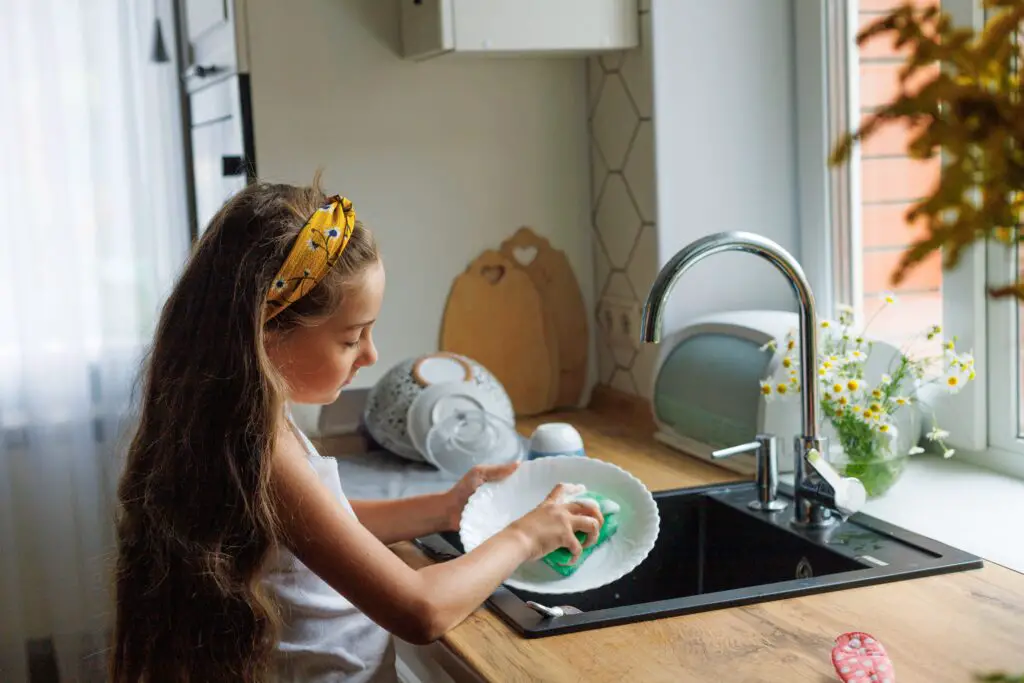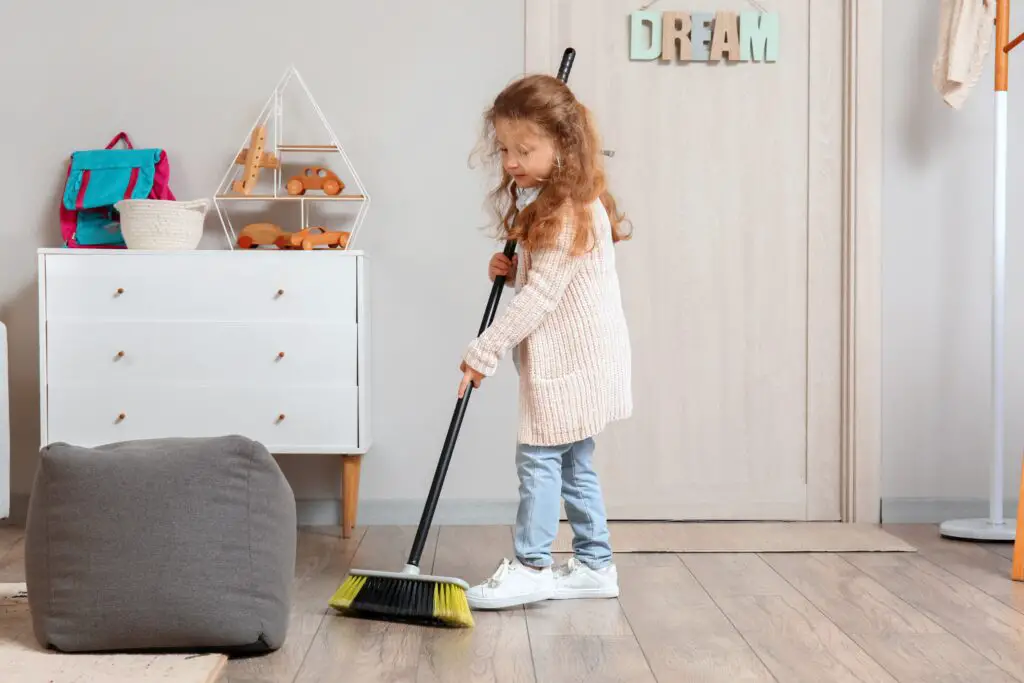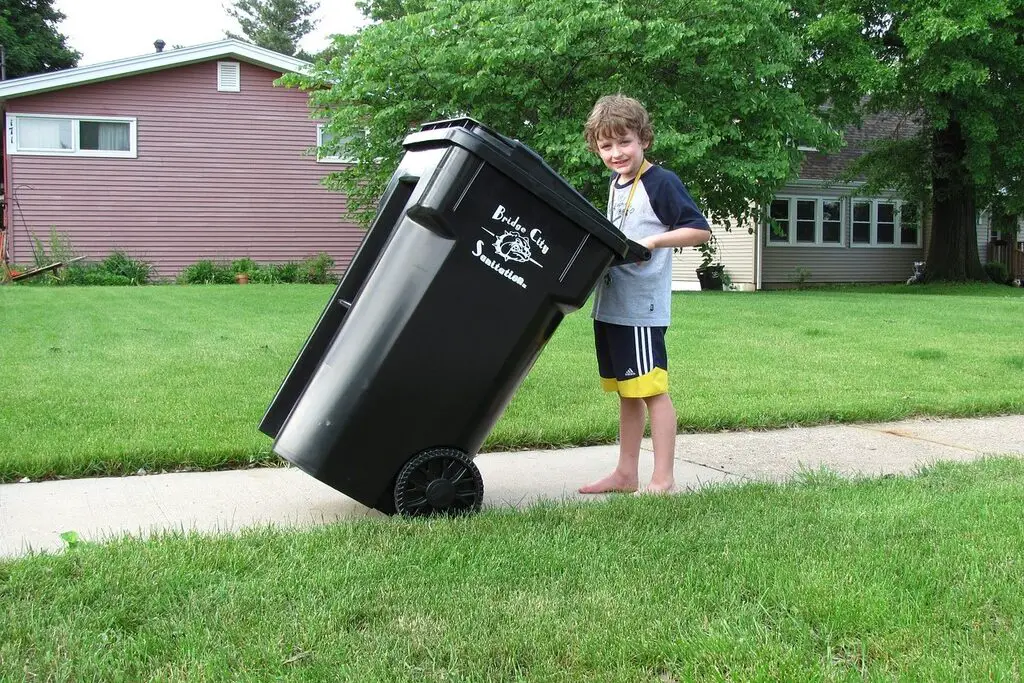1. Making the Bed—Neatly, Not Just Tossing the Blanket

In the 1950s, making the bed wasn’t just a quick fluff and tuck—it was a daily ritual, and kids were expected to do it with precision. Hospital corners were the gold standard, and if the sheets weren’t tight enough to bounce a quarter, well, you were sent back to redo it. Parents believed that a tidy bed set the tone for a disciplined day, and kids learned early that sloppiness wasn’t an option. Even younger siblings were coached by older ones, often with a mix of pride and exasperation.
It wasn’t just about aesthetics—it was about responsibility. A well-made bed symbolized order in a post-war household that valued structure and self-reliance. Kids didn’t complain much; they knew it was part of growing up. And if you were lucky, your mom might give you a nod of approval before heading off to her own chores. That little nod meant everything.
2. Washing Dishes—By Hand, Of Course

Before dishwashers became household staples, the sink was the battleground—and kids were expected to suit up with suds and a sponge. By age eight, most children knew how to scrape, rinse, wash, and dry, all without leaving a greasy film or a single spot. There was a rhythm to it: wash glasses first, then plates, then greasy pans last. And heaven help you if you let the water get cold or forgot to change it when it got murky.
It wasn’t just about cleanliness—it was about teamwork. Often, one child washed while another dried, and the third put everything away. It was a bonding moment, even if it came with a few splashes and sibling squabbles. Parents saw it as a way to teach cooperation and pride in a job well done. Plus, it gave kids a sense of contribution to the household, which was a big deal back then.
3. Sweeping the Floor—With Real Technique

Sweeping wasn’t just a random flurry of broom strokes—it was a skill, and kids were taught to master it early. You had to start from the corners, gather the dust into a neat pile, and avoid scattering crumbs under the rug (a rookie mistake). If you missed a spot, someone would notice—probably Grandma, who had eyes like a hawk when it came to cleanliness.
It was a chore that taught patience and attention to detail. Kids learned that rushing through it only meant doing it twice. And sweeping wasn’t limited to the kitchen—porches, hallways, and even the garage were fair game. It was a quiet task, often done while humming a tune or daydreaming. But when the floor gleamed and the dustpan was full, there was a real sense of accomplishment.
4. Folding Laundry—Crisp, Square, and Stackable

By eight, kids in the ’50s were expected to fold laundry like little department store clerks. Towels had to be squared off, shirts laid flat, and socks paired with military precision. No one tossed clothes into drawers willy-nilly—there was a method, and it was passed down like a sacred family recipe. Even pillowcases had their own folding technique.
It was about more than neatness—it was about pride. A well-folded stack of laundry was a badge of honor, and kids often competed to see whose pile looked best. Moms appreciated the help, but they also inspected the results with a discerning eye. If it didn’t pass muster, it went back into the basket. And yes, refolding was part of the learning curve.
5. Setting the Table—With Forks in the Right Spot

Dinner was a formal affair in many ’50s households, and setting the table was a chore kids took seriously. Forks went on the left, knives and spoons on the right, and napkins were folded just so. By age eight, children knew the difference between a salad fork and a dinner fork, even if they didn’t always understand why it mattered. Plates were centered, glasses aligned, and everything had its place.
It was a lesson in etiquette and presentation. Parents believed that teaching kids to set a proper table instilled respect for mealtime and the people around it. It wasn’t just about eating—it was about gathering, sharing, and showing care. And when guests came over, kids beamed with pride as they laid out the table like pros. It was their moment to shine.
6. Taking Out the Trash—Without Leaving a Trail

Trash duty wasn’t glamorous, but it was a rite of passage. By eight, kids were expected to tie up the bag, carry it out without dripping anything, and make sure the lid was secure. If the can was full, they had to replace the liner too—no shortcuts allowed. And if they forgot, they’d hear about it at breakfast the next day.
It was a chore that built grit. Hauling a heavy bag in the rain or snow wasn’t fun, but it taught kids to push through discomfort. Parents saw it as a way to instill accountability—if you made the mess, you helped clean it up. And while no one loved trash duty, it was one of those tasks that quietly shaped character. Plus, it gave kids a reason to boast: “I took out the trash without spilling a drop.”
